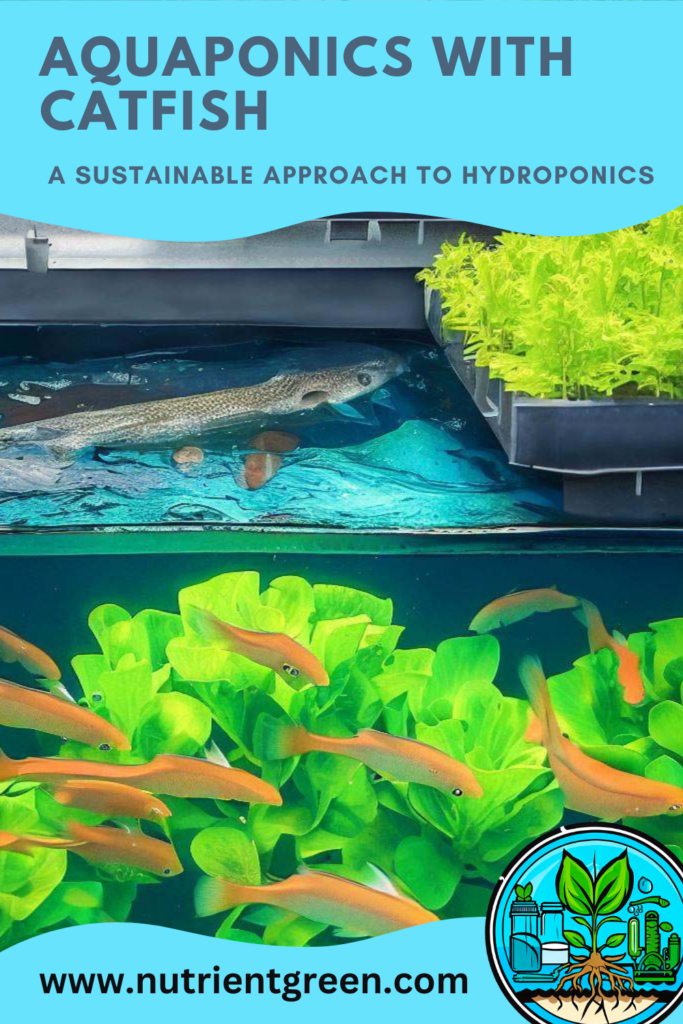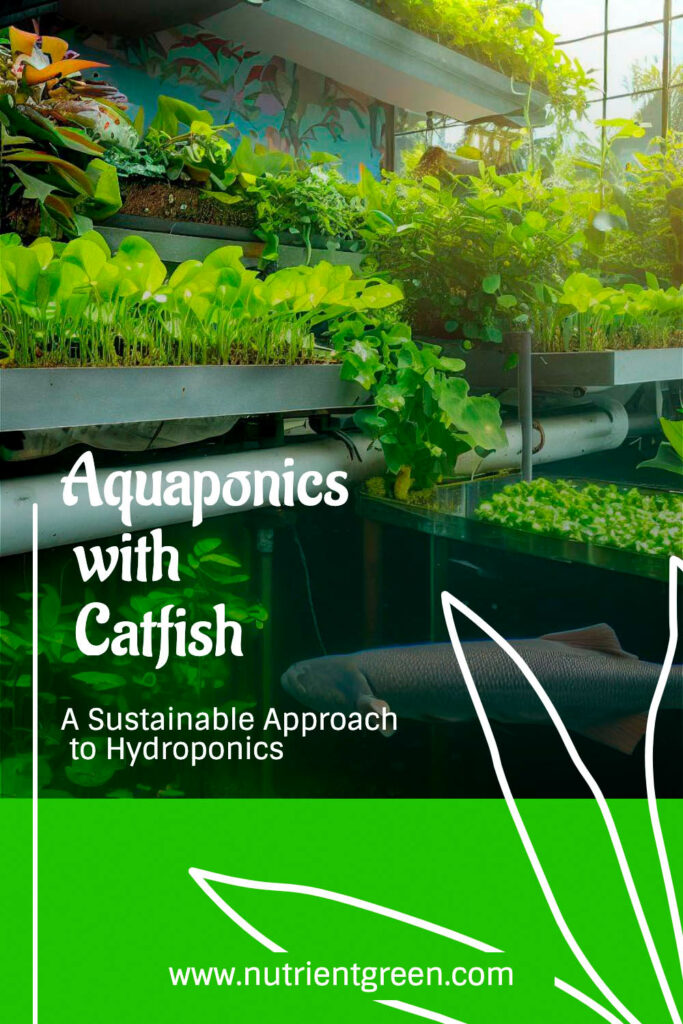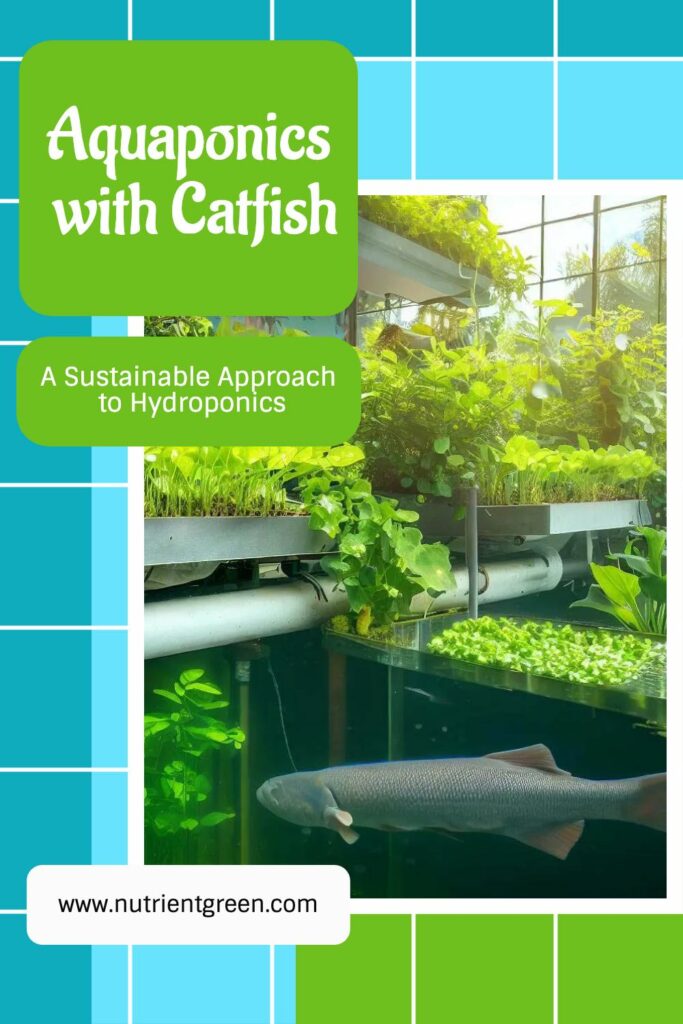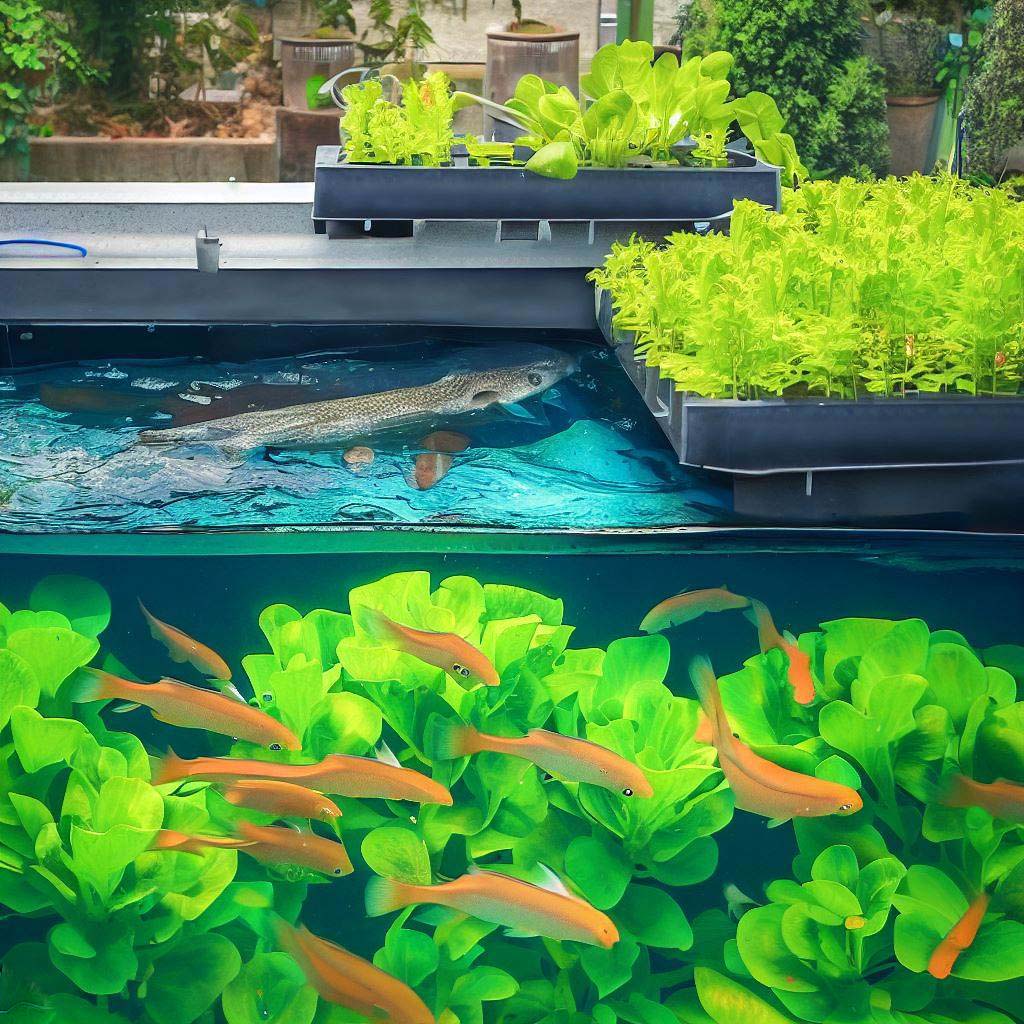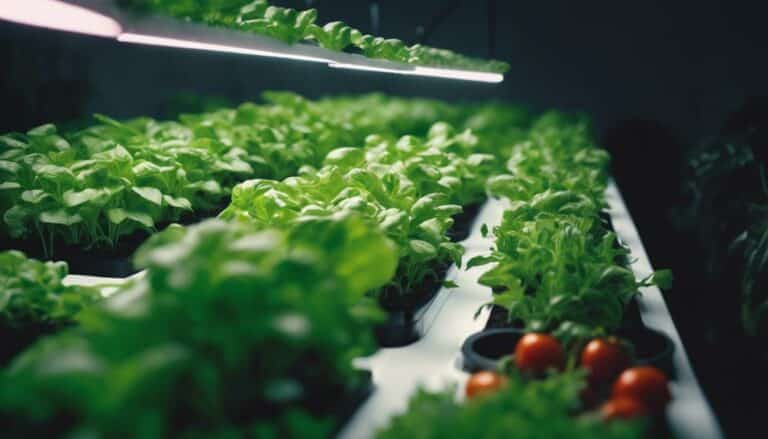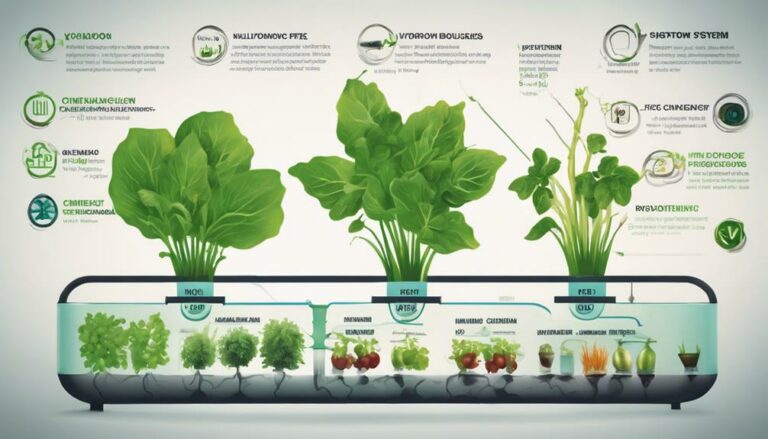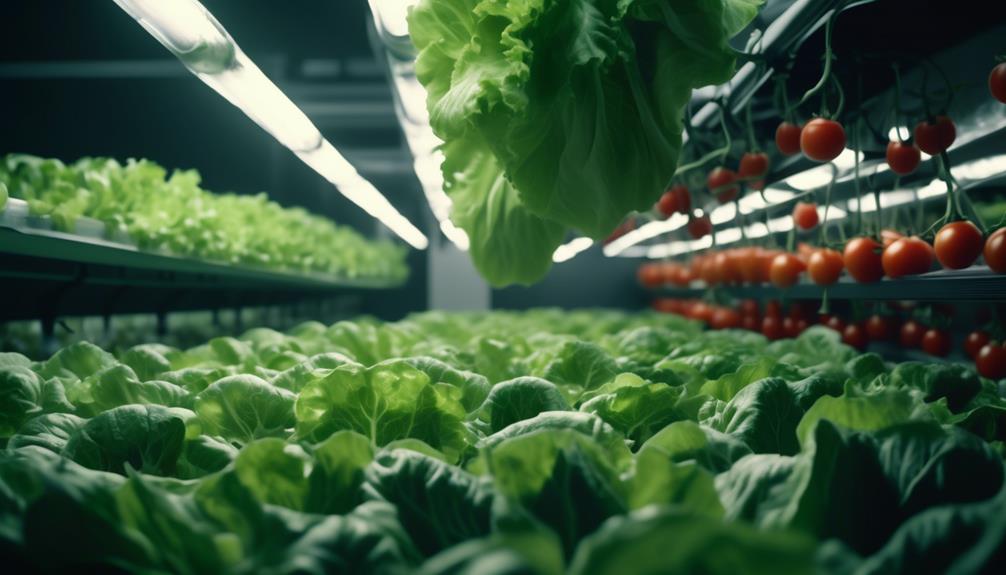Have you ever wondered if you can grow your own food in a sustainable and efficient way? If so, you might want to consider aquaponics. Aquaponics is a method of growing plants and fish together in a symbiotic system. In this article, we will explore how you can use Aquaponics with Catfish and enjoy the benefits of this amazing technique.
Table of Contents
What is Aquaponics?
Aquaponics is a combination of aquaculture (raising fish) and hydroponics (growing plants without soil). In an aquaponics system, the fish waste acts as a natural fertilizer for the plants, while the plants filter and clean the water for the fish. This creates a closed-loop cycle that reduces water usage, eliminates chemical inputs, and produces organic food.
An aquaponics system consists of three main components: a fish tank, a grow bed, and a pump. The pump circulates the water between the fish tank and the grow bed, where beneficial bacteria convert the ammonia in fish waste into nitrates that plants can absorb. The grow bed can be filled with various media, such as gravel, clay pebbles, or perlite, to support the plant roots.
Aquaponics allows you to grow a variety of plants and fish that suit your preferences and needs. Some common plants that can be grown in aquaponics include leafy greens, herbs, tomatoes, peppers, cucumbers, strawberries, etc. Some common fish that can be raised in aquaponics include tilapia, trout, bass, carp, etc.
Why Choose Catfish for Aquaponics?
Catfish are one of the best choices for aquaponics for several reasons. First of all, catfish are hardy and adaptable fish that can survive in different water conditions. They can tolerate a wide range of temperatures (from 65°F to 90°F), pH levels (from 6.5 to 8.5), and dissolved oxygen levels (from 4 ppm to 8 ppm). They are also resistant to many diseases and parasites that may affect other fish.
Secondly, catfish are fast-growing and high-yielding fish that can convert their food to body mass efficiently. They can reach market size (about 1.5 lbs) in less than a year with proper feeding and care. They also have a high stocking density (up to 1 lb per gallon of water), which means you can raise more fish in less space. (See also a scientific study that compares the performance of a catfish-pumpkin aquaponics system with conventional production systems. It shows that aquaponics with catfish is more efficient and productive than other methods of food production.)
Thirdly, catfish are delicious and nutritious fish that can provide you with a source of protein and omega-3 fatty acids. Catfish have a mild and sweet flavor that can complement any dish. They can be cooked in various ways, such as frying, baking, grilling, smoking, etc.
There are different types of catfish that can be used in aquaponics, depending on your preference and availability.
Some of the most popular ones are:
- Channel catfish: This is the most common catfish used in aquaponics because they are easy to find and cheap to buy. They have a smooth skin and a forked tail. They can grow up to 40 lbs in the wild, but usually reach 3 lbs in aquaponics systems.
- Brown bullhead catfish: This is a native catfish that can be found in many lakes, ponds, and streams in North America. They have a brownish color and a square tail. They are slow-growing but very tough. They can grow up to 6 lbs in aquaponics systems.
- Eel-tailed catfish: This is an exotic catfish that is native to eastern Australia. They have a dark color and an elongated tail. They are bottom-feeders and omnivores. They can grow up to 15 lbs in aquaponics systems.
Catfish can also be mixed with other fish in the same tank, as long as they have similar water requirements and temperament. Some good companions for catfish are bluegill, perch, koi, goldfish, etc.
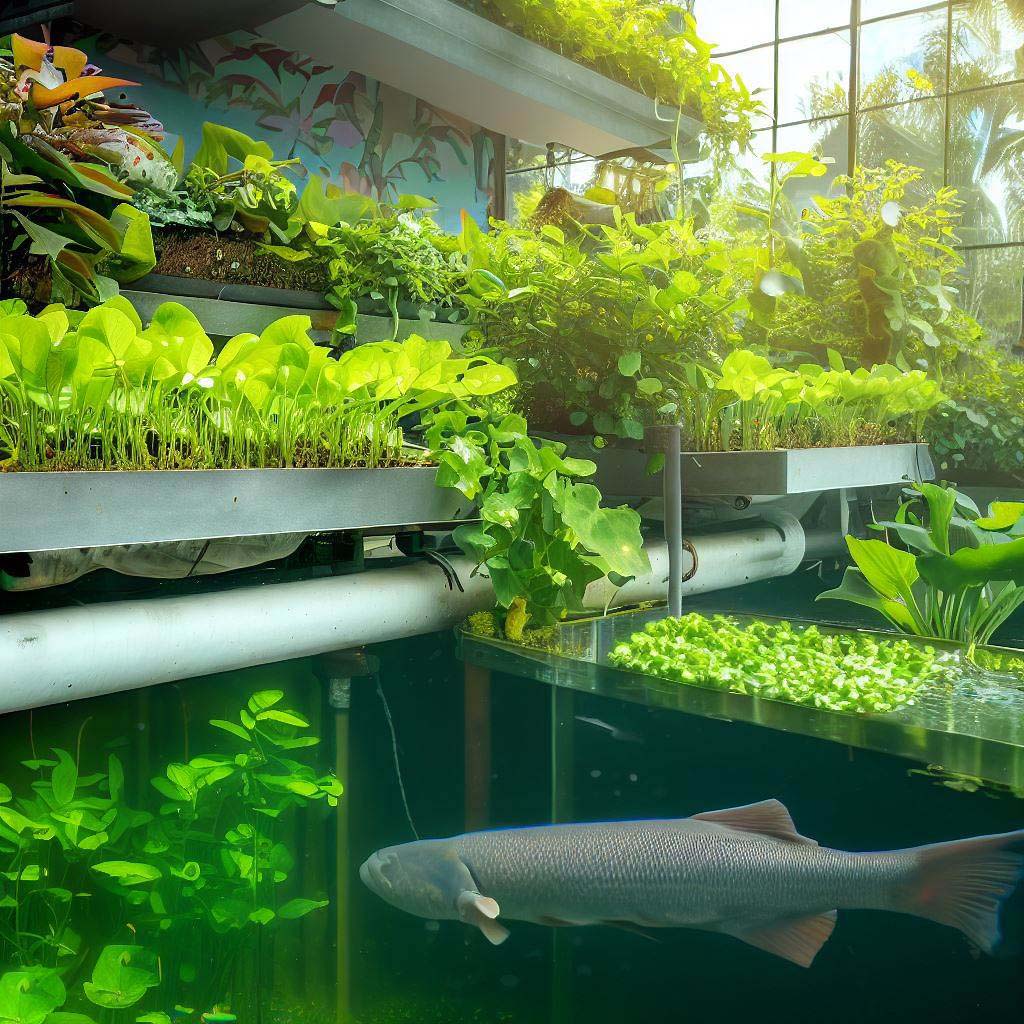
How to Raise Catfish in Aquaponics Systems?
If you want to raise catfish in aquaponics systems, you need to follow some basic steps to ensure their health and growth. Here are some tips on how to do it:
- Select and source your catfish: You can buy catfish fingerlings (young fish) from local hatcheries or online suppliers. Make sure you choose healthy and disease-free fish that are suitable for your system size and climate. You can also breed your own catfish by providing them with a spawning area and adequate food.
- Prepare your tank and grow bed: You need to have a large and sturdy tank that can hold enough water and fish for your system. You also need to have a grow bed that can support the plants you want to grow. You need to cycle your system before adding the fish, which means establishing the beneficial bacteria that will process the fish waste. You can do this by adding some ammonia or fish food to the water and waiting for the nitrate levels to rise.
- Acclimate and introduce your catfish: You need to gradually adjust your catfish to the water temperature and chemistry of your system before releasing them into the tank. You can do this by floating the bag or container with the fish in the tank for about an hour, then adding some water from the tank to the bag or container every 15 minutes until they are equalized. Then you can gently release the fish into the tank.
- Feed and harvest your catfish: You need to feed your catfish regularly with high-quality fish food that contains at least 30% protein. You can also supplement their diet with worms, insects, or kitchen scraps. You need to monitor the water quality and adjust the feeding rate accordingly. You can harvest your catfish when they reach your desired size and weight. You can use a net or a hook to catch them.
What are the Challenges and Solutions for Catfish Aquaponics?
Raising catfish in aquaponics is not without challenges. You may encounter some problems that may affect the health and productivity of your system. Here are some common issues and how to deal with them:
- Disease: Catfish may get sick from bacterial, viral, fungal, or parasitic infections that may cause symptoms such as lesions, ulcers, spots, swelling, etc. To prevent disease, you need to keep the water quality high, avoid overcrowding, quarantine new fish, and remove dead or sick fish promptly. To treat disease, you need to identify the cause and use appropriate medications or remedies.
- Predators: Catfish may be attacked by predators such as birds, raccoons, snakes, etc., that may try to access your tank or grow bed. To prevent predation, you need to cover your tank and grow bed with nets, fences, or other barriers. You can also use scare devices or repellents to deter predators.
- Algae: Algae may grow excessively in your system due to excess nutrients or sunlight exposure. Algae may compete with plants for oxygen and nutrients, clog filters and pipes, and reduce water clarity. To prevent algae growth, you need to limit the amount of sunlight reaching your system, balance the fish-to-plant ratio, and remove excess algae manually or with algae-eating fish or snails.
- pH imbalance: pH is a measure of how acidic or alkaline your water is. The ideal pH range for catfish aquaponics is between 6.5 and 8.5. If the pH is too high or too low, it can affect the growth and health of the plants, fish, and bacteria. To adjust the pH level, you need to use appropriate substances that can either increase or decrease the acidity or alkalinity of the water. Some common substances that can be used are:
- To lower the pH level, you can use phosphoric acid, which is a strong acid that can effectively reduce the alkalinity of the water. However, you need to use it carefully and sparingly, as it can also lower the carbonate buffer and harm the bacteria. You can also use organic acids, such as vinegar or citric acid, but they are weaker and less effective.
- To raise the pH level, you can use calcium carbonate and potassium carbonate, which are base substances that can increase the alkalinity of the water. They can also provide calcium and potassium for the plants. However, you need to use them gradually and moderately, as they can also increase the hardness of the water and cause scaling.
When adjusting the pH level, you need to monitor the changes closely and make small adjustments over time. You should avoid making drastic changes that can shock or stress the system.
Conclusion
Aquaponics with catfish offers a sustainable and rewarding approach to hydroponics. By harnessing the natural symbiosis between fish and plants, enthusiasts can create a thriving ecosystem that provides fresh produce and delicious catfish. With careful attention to setup, maintenance, and maximizing plant growth, aquaponics with catfish opens up a world of possibilities for home gardeners, urban farmers, and sustainable food enthusiasts.
FAQs
How many catfish can I raise in an aquaponics system?
The recommended stocking density for catfish in aquaponics is one pound of fish per eight gallons of water. This means that you can raise about one catfish per gallon of water if the fish weighs about 0.125 pounds or 2 ounces. However, this may vary depending on the size and type of catfish, the water quality, and the system design. You should also consider the space and nutrient requirements of the plants you want to grow with catfish in aquaponics.
What kind of plants can I grow with catfish in an aquaponics system?
You can grow a variety of plants with catfish in an aquaponics system, as long as they have similar water requirements and pH preferences. Some common plants that can be grown with catfish are leafy greens, herbs, tomatoes, peppers, cucumbers, strawberries, etc.
How often should I feed my catfish in an aquaponics system?
You should feed your catfish regularly with high-quality fish food that contains at least 30% protein. You can also supplement their diet with worms, insects, or kitchen scraps. You should monitor the water quality and adjust the feeding rate accordingly.
How do I harvest my catfish in an aquaponics system?
You can harvest your catfish when they reach your desired size and weight. You can use a net or a hook to catch them. You should harvest them gradually and not all at once to avoid disrupting the balance of the system.
How do I prevent disease and predation in my catfish aquaponics system?
You can prevent disease and predation by keeping the water quality high, avoiding overcrowding, quarantining new fish, removing dead or sick fish promptly, covering your tank and grow bed with nets or fences, using scare devices or repellents to deter predators, etc.
